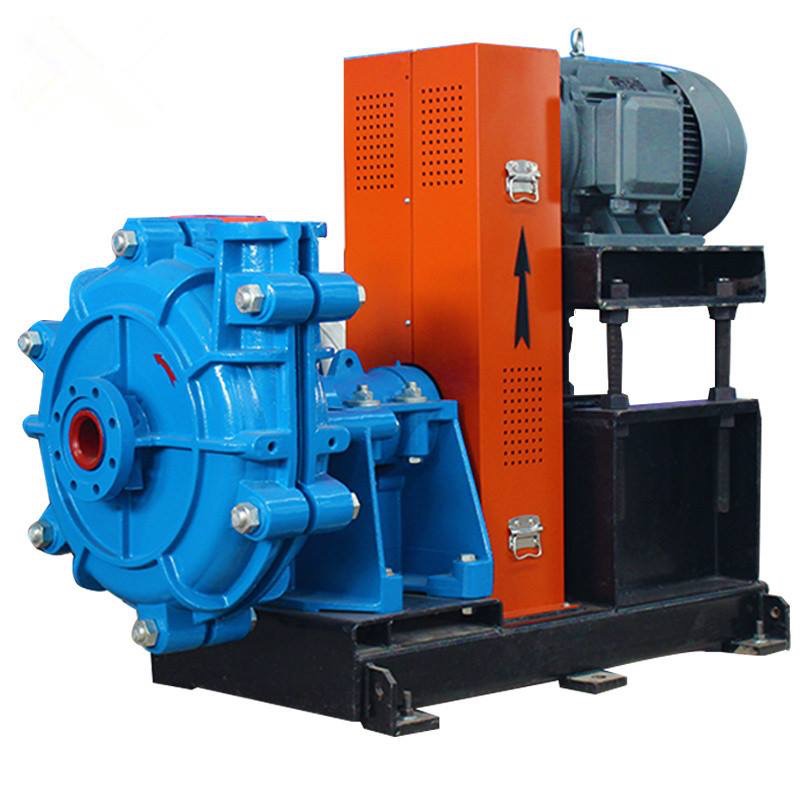The sizing and selection of a pump requires learning the most you can about the system and about the slurry you will be pumping Information required:

The top size particles are critical in the selection of the pump to be used as it will determine whether the pump wet end is to be all metal, all elastomer, or a combination The industry has set a rule of thumb which suggests that hard metal pumps be used where the material size is ¼ inch or above. This is only a guideline and is also dependent on the size distribution of the solids. If the top size particles are coarse, but there are a lot of fines or slimes in the slurry, the selection may be altered.
The slimes are generally considered to be minus 200 mesh material. This very fine material forms a homogeneous mixture with the carrying liquid. This increases the density of the carrying fluid and tends to retard the settling of larger particles.
As the percent solids in a slurry is increased the critical settling velocity and corresponding critical carrying velocity are reduced This is caused by the increased interference of smaller particles traveling at high velocity tending to support the larger particles and preventing their settling
The settling rate of particles which are crushed and are of irregular shape will settle at slower rates than particles which are rounded. Also, as the specific gravity of the solids increases the settling velocity will also increase.
It is important to know about the liquid in the slurry makeup and the pH to determine if there may be a corrosion or material compatibility problem in addition to the abrasion. Such things as chlorides, sulfides, etc can affect the selection of materials for the wet end of the pump. The makeup of the carrying liquid, as well as the temperature, is also important in determining the vapor pressure.
The carrying velocity in larger diameter pipes must be higher due to the tendency of slurry to classify in larger cross sections.
The rate of flow will determine the size of the pump to be used. The rate of flow for a given size pump will determine the internal velocities in the pump, the velocity of flow through the pipe of a given size as well as the friction loss in that pipe
Total dynamic head, simply stated, is the difference between the level of the sump and the point of discharge of the slurry plus the friction head on the suction and discharge side of the pump. In the case where the pump is feeding another piece of equipment, such as a cyclone, then the pressure drop in feet of liquid must be added to obtain the TDH.
The friction head or head loss through the piping is a function of the pipe diameter, length, number of valves, fittings, etc. It also varies with the type or condition of the pipe.
The method most frequently used is the Williams and Hazen formula for friction This information is available in tabular or nomograph form in hydraulic handbooks such as Cameron or The Hydraulic Institute Handbook. This data is usually sufficient for in-plant pump installations. In such service as long distance tailings lines actual tests are recommended.
Net positive suction head is the pressure required to cause the slurry to flow into the impeller of the pump. Contrary to the belief of some people, PUMPS DON’T SUCK! The NPSH available in the system must be greater than the NPSH required by the pump or the pump simply will not pump. The net positive suction head available is the energy in the liquid at the suction inlet of the pump over and above the energy in the liquid due to its vapor pressure.
In most applications where the suction of the pump is flooded, the temperature of the slurry is ambient and the carrying liquid is water, the NPSH will not be a problem providing the suction line is short
Copyright ©2016 chinaqualitypump.com |
Links:
